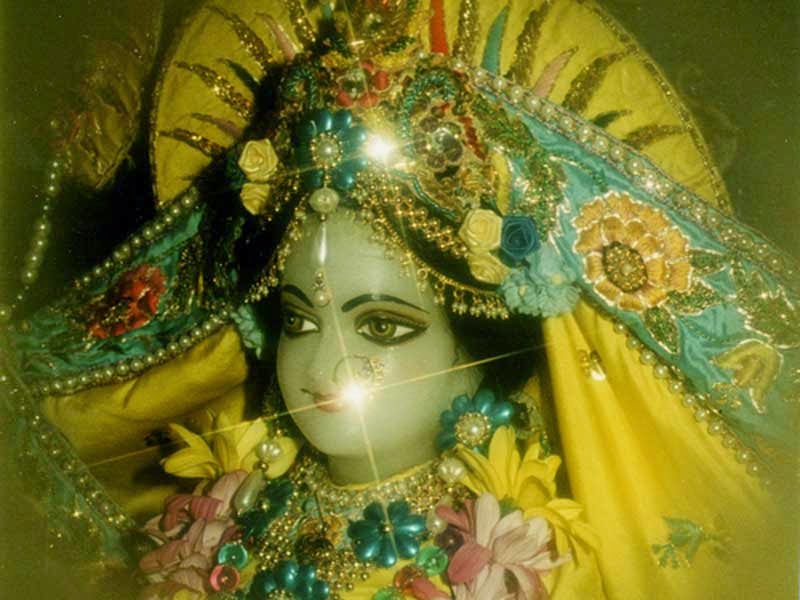As a reaction to my last blog one revered Vaiṣṇava asked me the following questions –
“This is a most intriguing point, where you said there is one paravyoma for every liberated soul. Could you please answer these questions to give more insight to this wonderful totally personalized view of spiritual reality? Could you provide several śāstra-references substantiating this point?”
Advaitadās –
a. Please see Bṛhad Bhāgavatāmṛta 2.5.52 -
yathā hi bhagavān ekaḥ śrī-kṛṣṇo bahu-mūrtibhiḥ
bahu-sthāneṣu varteta tathā tat-sevakā vayam
yathā—as; hi—certainly; bhagavān—the Supreme Lord; ekaḥ —one; śrī-kṛṣṇaḥ—Śrī Kṛṣṇa; bahu—with many; mūrtibhiḥ— forms; bahu—in many; sthāneṣu—places; varteta—can be present; tathā—so; tat-sevakāḥ—His servants; vayam—we.
“Just as the one Personality of Godhead Śrī Kṛṣṇa exists in many forms and many places, so also do we, His servants.”
b. Ānanda Gopāl Goswāmi often says in his commentaries to Vilāpa Kusumānjali that there are no sakhīs around while the manjarīs render their services. Tulsī Manjarī does all services alone, though they are sometimes ascribed to sakhīs in other granthas like Govinda Līlāmṛta and Rādhā-Kṛṣṇa Gaṇoddeśa Dīpikā.
c. Kṛṣṇa is called ananta-rūpa in Brahma Samhitā 5.35 – He has innumerable forms, not just one.
d. yukti, common sense, also dictates that it is not possible for innumerable liberated souls to serve just one Rādhā-Kṛṣṇa.
Vaiṣṇava - If both Guru and disciple get liberated does this mean they will be in two different spiritual realms, alone with Rādhā-Kṛṣṇa and the sakhīs and mañjarīs?
Advaitadās – “No. Vilāpa Kusumānjali 55 and 72 show Rūpa Manjarī and Tulasī Manjarī serving together. Whenever required, devotees will gather for service, and wherever required they'll serve alone.”
Vaiṣṇava - You once said something like each Guru, and his predecessor gurus/manjarīs, and his disciples are all members of one group serving Rādhā-Kṛṣṇa together in their own kunja with their yūtheśvarī (gopī-group leader) in their own spiritual realm. Is this correct? Where is this told? Please offer us any knowledge and śāstras you can to help us understand this amazing revelation about the spiritual reality.
Advaitadās – Please see Dhyānacandra's Paddhati, text 87 -
sarva-laksana-sampanna bhāva-hāvādi-bhūṣitā
guru-prasāda-jananī guru-rūpā-priyānugā
gāndharvikā-sva-yūtha-sthā lalitādi-gaṇānvitā
“She has all pleasant characteristics and is adorned with feminine gestures that excite feelings of love. She is born from the mercy of her Guru, and she always follows her guru-rūpā-sakhī. She remains in Śrī Rādhā’s own party (yūtha) in the company of Lalitā’s group (gaṇa).”
Another Bhakta – „Is it not offensive to have tattoos of the Lord or His emblems? After all we pass stool with these images on our bodies.“
Advaita Das – „We pass stool with our Tulsi-neckbeads and tilak on too.“
Bhakta – „Yes, I know, but tattoos can be avoided.“
Advaita Das – „Yes I agree. I think tattoos are really low class, especially for women. It is not a Vaiṣṇava habit. We have brand-marks of śankha and cakra only. We are not sailors.“

